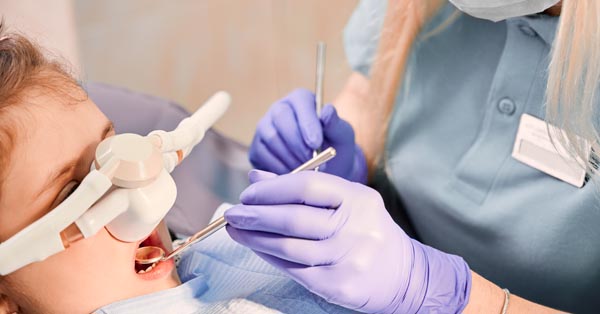Is Dental Sedation Safe For Kids?
By: Jenny Green, Colgate
Parents also play an important role during the dental sedation procedure. Prepare your child and follow the guidelines to gain positive results. The Oral Surgery DC Team
Safety is parents' top consideration when it comes to their child receiving dental sedation. Dentists may recommend sedation for long, complex procedures and for patients who are especially young or nervous. Sedating a patient is normally a very safe procedure, and parents can help reduce the risks and stress level for their child before, during and after the treatment.
Types of Sedation
Oral sedation, nitrous oxide and intravenous sedation are the major types of sedation dentists provide. According to the Children's Hospital of Pittsburgh of UPMC, oral sedation is taken by mouth or through the nose as soon as the patient arrives at the appointment, as the medicine usually takes up to 20 minutes to work. Oral sedation doesn't put patients to sleep, but it helps them stay calm and relaxed.
Nitrous oxide, or laughing gas, also helps children remain calm. A mask delivers a mixture of nitrous oxide and oxygen, and within five minutes, the patient relaxes and experiences euphoric feelings. At the end of the procedure, pure oxygen is given to the patient to clear out any remaining nitrous oxide.
Intravenous sedation is delivered through a needle inserted into the patient's vein. The American Society of Dentist Anesthesiologists explains that nitrous oxide is used to send the child to sleep before a needle is inserted, usually into a vein on the back of the child's hand. A tube is also inserted into the patient's throat to aid breathing.
Before Sedation
The American Academy of Pediatric Dentistry advises parents that children tolerate sedation and other dental procedures best if the parents understand what is happening and help prepare the child. Parents must restrict food and drink before sedation, and it's especially important that parents follow these guidelines closely for key safety reasons, as sedation poses the risk of stomach contents being vomited and inhaled into the lungs. Dressing the child in loose-fitting clothing also helps because it allows dental assistants to attach monitors quickly and without fuss. Parents must provide a full medical history and tell the dentist if the child is receiving any prescriptions, over-the-counter medication or herbal supplements.
At the Dentist's Office
Parents can help their children stay relaxed by being calm and encouraging, according to the Children's Hospital of Pittsburgh. Try bringing along a comfort item for the kid to hold, such as a favorite toy or stuffed animal. Holding the child's hand and talking or singing gently are other good comfort tactics. Parents should also avoid bringing other children to the appointment so that they can focus their full attention on the child receiving care.
Safety Checks
For dentists, ensuring the patient's safety is paramount during dental sedation. While sedated, the patient's blood oxygen level, blood pressure, temperature and heart rate are closely monitored. A patient who requires general anesthesia may be referred to the dental hospital, such as that at the University of Maryland School of Dentistry.
After Sedation
At the Children's Hospital of Pittsburgh, parents are usually asked to be present while their child wakes up after sedation. The child may be confused or fussy and may feel nauseous. Two adults should accompany the child or teen on the way home - one to drive and one to check the child's breathing. Longer-lasting aftereffects of sedation include loss of physical coordination, dizziness, sleepiness and nausea, so going back to school or daycare is definitely not an option on the day of the procedure.
For the first few hours after the procedure, parents should give the child only soft foods. If the child experiences vomiting, severe pain, severe bleeding or fever, parents should contact the dentist immediately. When the mouth has healed, the child may continue caring for his teeth as normal, brushing twice a day with a fluoride toothpaste, such as Colgate® Kids 2in1.
Dental sedation is a safe and fuss-free procedure with the right preparation and proper care after it's over. By communicating clearly with your child's dentist, you'll provide the best possible experience for your child.






4.9 Stars
based on 134 reviews
5 Stars
based on 11 reviews
5 Stars
based on 11 ratings